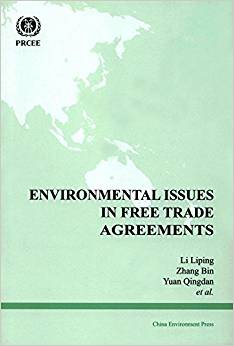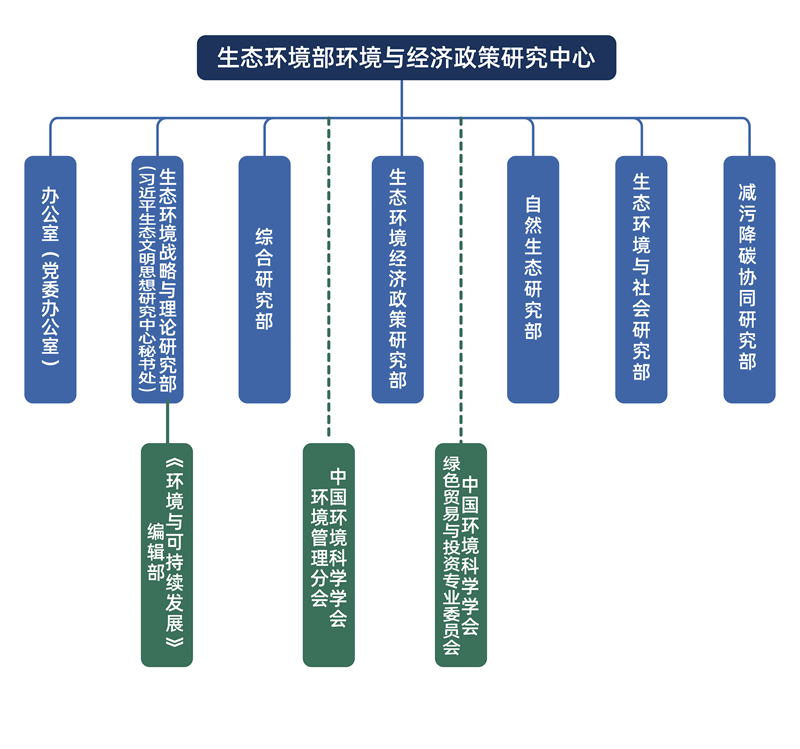
Introduction
Since the establishment of the World Trade Organization (WTO), a diversity of Free Trade Agreements (FTAs) have thrived and flourished around the globe. By 31st January 2016, there were altogether 239 FTAs that had been reported to the WTO and had taken effect, of which over 85% contain environmental provisions. Environmental provisions in FTAs refer to articles and contents including environmental protection or sustainable development in the text or appendix or affiliated agreement of FTAs. Environmental issue is often known as one of “economic and trade issues of the 21st Century” together with E-commerce and government procurement etc. In recent years, environmental contents in FTAs are becoming the new norm. First, a lot of FTAs contain environmental provisions, such as in the preamble, and relating to services, investment, technical cooperation, sanitary and phytosanitary measures, technical barriers to trade, and government procurement, adding up to as much as 24 environmental provisions (taking the environmental chapter as one, while the actual articles in this chapter may be over 20 in number). Second, it has already become a new norm to include independent environmental chapter in an FTA, aligned with chapters on services and investment. By 31st January 2016, there are 36 FTAs with independent environmental chapter. Third, it has already become a new normal for the environmental content in FTAs to evolve from a statement of general practice to measures which are specific and obligatory in nature, and FTAs increasingly cover specific articles on environmental cooperation as well as environmental disputes settlement. Rough counts show that around 80% of environmental chapters in FTAs include articles on disputes settlement.
In addition, more and more economies are accepting the idea of including articles and chapters specifically on the environment in FTAs. This leads to a constant expansion of a “Hub-and-Spoke” structure around the globe. For example, after signing its FTAs with the US and EU respectively, Republic of Korea has vigorously pushed for independent environmental chapter in FTAs to be signed with other trading partners. In addition, the negotiation on environmental provisions in the Trans-Pacific Partnership Agreement (TPP) has become a hot topic, and it also represents a consistent trend for FTAs globally. This trend will see environmental provisions in FTAs become ever more extensive, comprehensive and stringent.
Environmental provisions in FTAs have experienced a gradual evolution driven by multiple-forces. First, much theoretical and empirical research has proven the interactive relationship between trade and environment, which demands policy coordination through relevant measures. This is the fundamental basis and precondition for setting up environmental provisions in FTAs. Second, a number of documents or trade agreements, such as the Agenda 21, Rio Declaration, General Agreement on Tariffs and Trade (GATT) and the rules of the WTO, all have stipulations or articles concerning environment and trade, providing the major legal basis for the establishment of environmental provisions in an FTA. On the other hand, the US and EU have clearly put forward stipulations to ensure the mutual support of trade and environmental policies, seek instruments for environmental protection and international cooperation, and to optimize the utilization of world resources, which contributes to the establishment of environmental provisions in FTAs.
In China, the Decision on Some Major Issues Concerning Comprehensively Deepening the Reform adopted at the Third Plenary Session of the 18th Central Committee of the communist party of China has spelt out the requirements of “speeding up the construction of free trade zones… and accelerate negotiations on environmental protection, investment protection, government procurement… so as to form a global, high-standard network of free trade zones”. Viewed from current international situation and background, establishing environmental provisions or independent environmental chapter in FTAs is not a question of yes or no. Environmental provisions have become one of the key elements in establishing the high-standard global free trade zone network. In addition, the establishment of environmental provisions and chapters in FTAs serves also as a vital mean to resolve environmental problems from the root and demonstrates the strong commitment to the overall plan for promoting economic, political, cultural, social, and ecological civilization constructs. According to relevant research, the environmental situation in China remains grave at the present moment. The discharge volume of such pollutants as embodied effluent, SO2 and smoke and dust incurred by relevant international trade in the decade following China’s entering into the WTO accounted for up to 25%~40% of the overall discharge volume of such pollutants during the same period nationwide. Therefore, comprehensive consideration must be given to both environmental and trade policy to promote the integration of environment and economy, while the establishment of environmental provisions in FTAs constitutes a specific measure to avoid negative environmental impact brought by trade. As a matter of fact, China has not only included environmental provisions in all the FTAs signed, but also included independent environmental chapters in China-Switzerland FTA and China-Rep. of Korea FTA.
Based on the above-mentioned background and actual need, we believe the research on environmental provisions in FTAs is of vital significance to the promotion of the development of FTAs, as well as to the quality of FTAs and the level of environmental protection. However, up to now, the research on environmental provisions in FTAs remains limited both on the domestic and international front. Most of the existing studies focus on specific aspects, lacking overall review of the current situation, analysis of underlying reasons and relevant solutions. A number of questions need to be addressed regarding the theoretical supporting, international and domestic status quo, major contents, negotiation focus, arguments of each side, the strategy that China should take, and so on. This book aims to provide insights on the above-mentioned issues through in-depth research.
In an effort to fulfill the above objective, we have done an analysis of the FTA Database of the WTO including all 239 FTAs that have entered into force by the end of January of 2016. However, due to a range of barriers and limitations including language (e.g. data only available in Spanish rather than Chinese or English), time and material available, we have only conducted analysis and research on relevant environmental provisions in 212 accessible FTAs while focusing on systematic and key research on 36 independent environmental chapters contained in such FTAs. In the process of research, many experts in this area were consulted.
The book offers a systematic analysis of environmental provisions in FTAs in 9 chapters, which could be divided into 4 major parts. The first 4 chapters constitute part 1, which makes a general analysis and research of environmental provisions in FTAs; chapters 5 to 7 form part 2 which deals with 3 major environment-related issues contained in FTAs or closely related to FTAs; chapter 8 makes up part 3 which provides analysis of environmental provisions and chapters in FTAs signed by China; and chapter 9 is part 4 which analyses future prospect and provides policy recommendations.
Chapter 1 mainly covers the background, current situation and significance of the research, identifies the subject and scope of research and introduces the research method and technical roadmap. Chapter 2 looks at the theory of environment and trade including the theory of Kuznets curve, Pollution Haven Hypothesis as well as the Trade Induced Degradation Hypothesis. It also briefly reviews the empirical research on the correlation between environment and trade, with deliberations on the relationship between environment and FTAs as well as the theoretical foundation for including environmental provisions in FTAs. Chapter 3 makes a thorough analysis of the development status quo and characteristics of environmental provisions in FTAs by studying the environmental articles in the FTAs of economies such as the US, EU, Japan, Rep. of Korea and India. It analyzes and discloses the apparent and the interior reasons for economies to promote or reject the establishment of environmental provisions in FTAs. Chapter 4 analyzes the environmental content of FTAs, especially those in independent environmental chapters, and carries out the case studies of 3 typical FTAs, North American Free Trade Agreement (NAFTA), US-Rep. of Korea FTAs (KORUS) and EU-Singapore FTAs. Based on macro-analysis and systematic identification of environmental provisions in FTAs, this book has also targeted several major environmental issues contained in or closely related to FTAs. These include environmental cooperation, environmental dispute settlement mechanism as well as the environmental impact assessment (EIA) for FTAs. Chapter 5 to 7 make specific deliberation on these three issues respectively. Chapter 5 makes a comprehensive and thorough overview of environmental cooperation in FTAs from the perspective of general situation, evolution over time, motivation for cooperation, type of cooperation, funding mechanisms, institutional arrangements as well as areas of cooperation. Chapter 6 mainly studies the environmental dispute settlement mechanism in FTAs by analyzing dispute settlement mechanism and the environmental disputes appearing in FTAs. It studies environmental dispute settlement mechanism in FTAs and relevant case studies and explores the selection of court for the settlement of environmental dispute and law applicability. Chapter 7 analyzes and discusses the EIA of FTAs by comparing the EIA methodology system of the US, Canada and EU and specially studying the EIA of US-Rep. of Korea FTAs, the sustainable impact assessment of the Doha Round of WTO carried out by the EU as well as the EIA of NAFTA. Based on the macro and specific analysis of relevant issues, Chapter 8 reviews and analyzes the practice of the establishment of environmental provisions in FTAs of China and compares the practice of China with other economies by employing the case study of China-Switzerland FTA, thus defining the incentives of China of to promote environmental provisions in FTAs. Finally, Chapter 9 makes a prediction of the future development trend of environmental provisions in FTAs and consequently puts forward policy recommendations on the solutions of environmental provisions in future FTAs based on the prediction.
The book was edited by Li Liping, Zhang Bin and Yuan Qingdan from the Policy Research Centre for Environment and Economy (PRCEE), Ministry of Environmental Protection (MEP), China. Chapter 1 (Introduction) was jointly authored by Li Liping, Zhang Bin and Yuan Qingdan from PRCEE; Chapter 2 (Research on the Theory of Environment and Trade Agreements) was authored by Zhang Bin; Chapter 3 (Analysis of the Development and Rationale for Environmental Provisions in FTAs) was jointly authored by Li Liping, Chen Chao, Zhao Jia and Xia Yang from PRCEE; Chapter 4 (Content analysis of environmental provisions in FTAs)was authored by Li Liping; Chapter 5 (Environmental Cooperation Provisions in FTAs)was authoredby Zhang Bin; Chapter 6 (Environmental Dispute Settlement of FTAs) was authored by BianYongmin from the University of International Business and Economics; Chapter 7 (Environmental Impact Assessment of FTAs) was jointly authored by Zhang Bin, Li Liping and Mao Xianqiang from Beijing Normal University; Chapter 8 (Analysis of Environmental Provisions in FTAs of China) was jointly authored by Xiao Junxia and Li Liping from PRCEE; Chapter 9 (The Development of Environmental Provisions in FTAs and Recommendations) was authored by Li Liping. Additional assistance in finalizing this book was provided by Xiao Junxia, Zhao Jia and Xia Yang. Anja von Moltke, Head of Environment and Trade Hub Unit, UNEP, and Ying Zhang, Associate Programme Management Officer, Environment and Trade Hub Unit, UNEP have also contributed to this book.
Upon the publishing of this book, we would like to offer our special acknowledgement to the UNEP Environment and Trade Hub, the Department of International Cooperation of MEP, the Department of International Trade and Economic Affairs, the Department of WTO Affairs, the Department of Treaty and Law and the Department of Trade in Services and Commercial Services of Ministry of Commerce (MOFCOM), the Department of Treaty and Law of the Ministry of Foreign Affairs (MFA), the EIA Research Center of MEP, the Institute of International Economic Research of National Development and Reform Commission (NDRC), Chinese Academy of International Trade and Economic Cooperation of MOFCOM. Our special thanks also go to Director Xia Guang and the colleagues of PRCEE for their strong support and help, Editor XuYuhong and Zhao Yan from China Environment Press for their full support in publishing the book as well as all research institutes and personnel involved.
Due to the limitation of material, time and professional expertise, the research done in this book on environmental provisions in FTAs is rather preliminary, demanding further deliberation and study. We sincerely hope to receive comments and suggestions from the readers.
Content
Chapter 1 Introduction
1.1 Background
1.2 Literature Review.
1.3 Significance of Research
1.4 Scope.
1.5 Methodology
1.6 Structure
Chapter 2 Research On the Theory of Environment and Trade Agreement
2.1 Environment and Trade Theories
2.2 Empirical Research on the Correlation between Trade and Environment
2.3 Trade,Environment and the Governance System
Chapter 3 Analysis of the Development and Rationale for Environmental Provisions in FTAs
3.1 Development of Environmental Provisions in FTAs
3.2 Status of Environmental Provisions of FTAs in Maior Economies
3.3 Analysis of Rationale for the Establishment of Environmental Provisions of FTAs
Chapter 4 Content Analysis of Environmental Provisions in FTAs
4.1 Main Environmental Provisions in FTAs
4.2 Case Study of Environmental Chapter in FTAs
Chapter 5 Environmental Cooperation Provisions in FTAs
5.1 General Analysis on Environmental Cooperation in FTAs
5.2 Evolvement of ECPs in FTAs
5.3 Main Motivations to Include ECP in FTAs
5.4 Types of Environmental Cooperation
5.5 Institutional and Financial Arrangements for Environmental Cooperation
5.6 Specific Areas of Environmental Cooperation
Chapter 6 Environmental Dispute Settlement under FTAs
6.1 Dispute Settlements Between States:an Overview
6.2 Environmental Disputes under FTAs
6.3 Dispute Settlement Mechanisms for Environmental Disputes under FTAs
6.4 Case Study of Environmental Dispute Settlement under FTAS
6.5 Choice of Forum and Application of Law
Chapter 7 Environmental Impact Assessment of FTAs
7.1 Overview and Characteristics of EIA of FTAs
7.2 Significance ofconducting EIA of FTAs
7.3 Development Process Of EIA Of FTAs
7.4 Major Methodologies for EIA of FTAs
7.5 Case Studies—Environmental Assessment of KORUS FTA
Chapter 8 Analysis of the Environmental Provisions in FTAs Of China
8.1 Current Situation of the Development of FTAs in China
8.2 Environmental Provisions in the FTAs of China
8.3 Case Studies
8.4 Comparison and analysis of Environmental Provisions in FTAs involving China
Chapter 9 The Development of Environmental Provisions in FTAs and Recommendations
9.1 The Future Trend of Environmental Provisions in FTAs
9.2 Recommendations
References.









